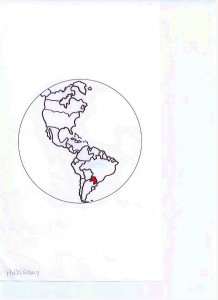PARAGUAY
A. THE COUNTRY
The Republic of Paraguay is a Latin American nation in central South America,
divided east and west by the Paraguay River. The government is a
constitutional presidential republic and the current politicians seem
dedicated to changing a history of poor leadership. There are few
natural resources besides agriculture and vast hydro-electric potential.
The landlocked status, lack of mineral resources and endemic corruption
hinder development. Inequitable land distribution (1% of the population
owns 77% of the land) creates widespread poverty and a subclass of
landless peasant farmers.
B. THE PEOPLE
The population is ~6,460,000 and the official languages Spanish and
Guarani. ~90% are Spanish/Guarani-speaking, ~1.9% Amerindian peoples,
~8.1% Immigrant minorities (German, Spanish, Mennonite, others).
C. RELIGIONS AND CHRISTIANITY/PENTECOSTALISM
There is complete separation of Church and State and equality before the
law, but the Catholic Church still wields far-reaching political and
social influence and often opposes the work of evangelicals.
~96.3% claim to be Christian, ~1.65% Non-religious, ~1.62%
Ethnoreligionist, ~0.19% Buddhist, ~0.12% Baha’i, ~0.06% Muslim, ~0.03%
Chinese, ~0.03% Jewish.
In the Christian category:
~86% are Catholic, ~5.05% Protestant, ~4.62% Independent, ~0.8%
Unaffiliated, ~0.33% Anglican, ~0.19% Orthodox.
Groups originating in western society considered ‘marginal’ are ~1.3%.
Evangelicals represent ~6.1% of the population.
Charismatics represent ~4.5% and of those ~3.5% are Pentecostals.
Donna Siemens
References:
http://en.wikipedia.org
Operation World, Jason Mandryk. Colorado Springs: Biblica Publishing, 2010.

